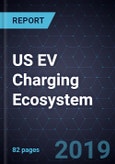Newer Business Models and Products Designed for an Ecosystem for Multiple Customer Personas are Driving the Growth of US EV Charging Ecosystem
By 2025, over 2 million electric vehicles (EVs) are expected to be sold only in the US. Consumers now prefer EVs over ICEs owing to fast developing charging network across the US. There is an opportunity for both AC and DC charging network expansion and traditional business models are not sufficient anymore. Unlike fuel stations, with respect to EV charging, there is no one-size-fits-all solution and OEMs, EVSEs, CPOs, and aggregators are capitalising on this opportunity. For instance, highways need equally spaced fast chargers city centres such as parking spaces, apartment complexes require AC charging station and a product design that is compact, modular, and scalable.
The next wave of charging is the 350kW ultra-fast chargers to be deployed and distributed along the highway. However, the need for lower power AC and DC charging units is still existential within the cities, and both fast and slow chargers will co-exist as the EV market expands. Therefore, it becomes imperative for participants in the market to not only focus on product/technology but also on the business model. How they reach consumers and the experience they create while reducing the cognitive load will become a key differentiating factor. A plethora of business models designed to reach to consumers are creating markets that previously did not exist. Charging operators are borrowing from principles such as access economy, subscription, and premium and ad-based economy from other verticals to design their business and carve a niche.
This study analyses various market participants segmented into manufacturers/suppliers, charge point operators, and aggregators to outline their existing business models and to design business models that could emerge in the future. New types of charging are emerging, such as the Photovoltaic technology advancements, which are expected to drive momentum and interest among Ford and Toyota. Static inductive charging is set to revolutionise the market beginning in luxury and later to the mass market as seen in the case of BMW and Mercedes. Companies like Qualcomm are fast tracking the development and will be the forerunner to technologies such as autonomous parking and charging. The study will also analyse the existing white spaces in the US charging infrastructure.
Key Issues Addressed
- What is the growth of the US EV charging and how is it impacting its existing charging infrastructure?
- What is the future scenario for the US EV charging market?
- Who are the market participants and what are their business models?
- What are the new business models and possible future business model designs in the charging space?
- Where are the white spaces for tech participants to enter the field?
Table of Contents
Companies Mentioned (Partial List)
A selection of companies mentioned in this report includes, but is not limited to:
- BMW
- Ford
- Mercedes
- Qualcomm
- Toyota








